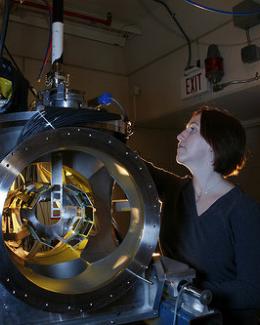Abstract
The formation of nuclei in slightly proton-rich regions of the neutrino-driven wind of core-collapse supernovae could be attributed to the neutrino-p process (νp-process). As it proceeds via a sequence of (p,γ) and (n,p) reactions, it may produce elements in the range of Ni and Sn, considering adequate conditions. Recent studies identify a number of decisive (n,p) reactions that control the efficiency of the νp-process. The study of one such (n,p) reaction via the measurement of the reverse (p,n) in inverse kinematics was performed with SECAR at NSCL/FRIB. Proton-induced reaction measurements, especially at the mass region of interest, are notably difficult since the recoils have nearly identical masses as the unreacted projectiles. Such measurements are feasible with the adequate separation level achieved with SECAR, and the in-coincidence neutron detection. Adjustments of the SECAR system for the first (p,n) reaction measurement included the development of new ion beam optics, and the installation of the neutron detection system. The aforementioned developments along with a discussion on the preliminary results of the p(58Fe,n)58Co reaction measurement are presented.




